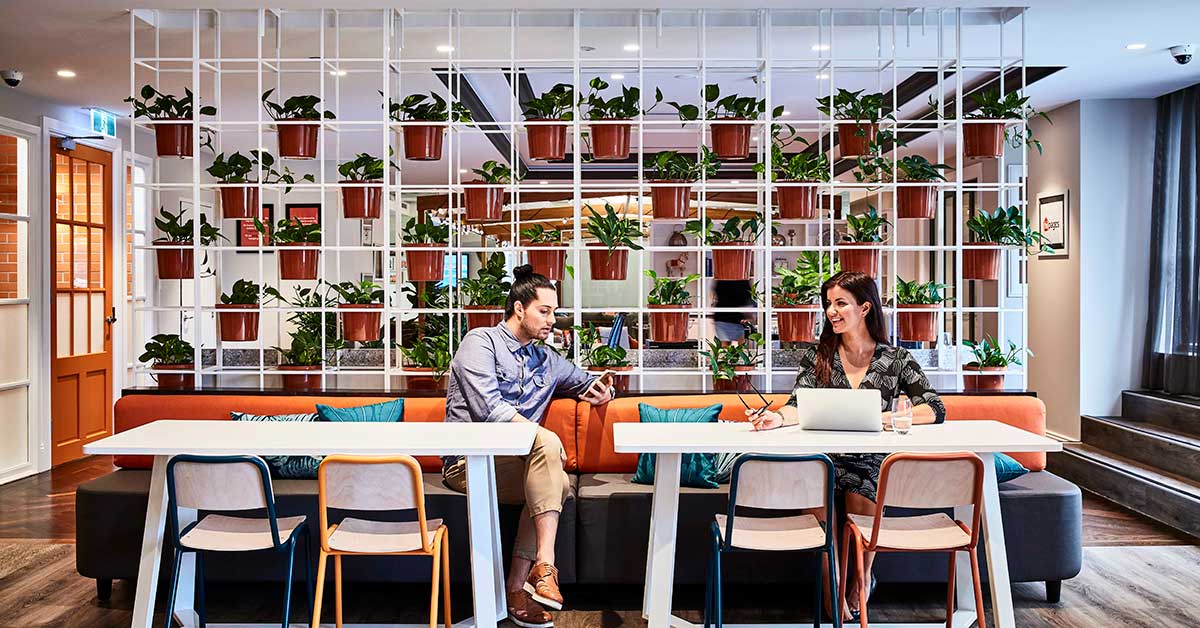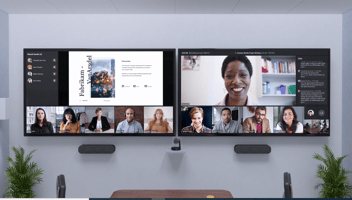
How to Build a Hybrid Workplace That Works in Australia

Hybrid workplaces are now the working norm for many of us. And implementing a hybrid workplace model can help boost collaboration, efficiency and productivity across teams, whether they are working onsite or remotely.
The hybrid workplace model offers increased flexibility, improved employee morale, and reduced operational costs. It gained momentum during the COVID-19 pandemic as companies adapted to remote work and realized its benefits. To ensure success, it's essential to maintain clear communication, provide the right technology, and foster a culture of trust and accountability.
According to Garry Slater, Studio Director of Strategy and Design at Axiom Workplaces, “Hybrid can be a far more effective collaboration approach. The intention is to WORK together not just BE together. It’s a refresh of what it means to be together and collaborate in a productive workplace.”
But being successful at hybrid working is not going to be easy. As workplaces move to this new working environment, there will be a number of challenges for progressive leaders that need to be addressed, which involve culture, workplace technology, health and wellbeing, virtual collaboration and online security.
So, how do you create productive, efficient hybrid workplaces?
A successful hybrid workplace model requires careful planning, a willingness to change things, and strong support from both remote and onsite teams. In this infographic, we focus on helping you deliver a workplace strategy that keeps both onsite and remote teams connected, engaged and productive within a hybrid working environment.
Creating a Successful Hybrid Workplace in Australia
A well-designed hybrid workplace brings together the best elements of remote and onsite work. It allows teams to collaborate effectively, remain engaged, and adapt quickly to changing business needs. Whether you’re just starting or refining your approach, having a clear hybrid workplace strategy is essential.
Successful hybrid workplace collaboration starts with defining how teams will work together, regardless of location. A strong hybrid workforce strategy considers employee preferences, operational requirements, and long-term business goals. Businesses often work with a hybrid workplace strategist or hybrid work strategist to develop policies, processes, and spaces that support this approach.
Technology plays a key role in making hybrid work successful. From video conferencing tools to shared digital workspaces, hybrid workplace technology and hybrid work technology ensure everyone can access information and communicate effectively. This is especially important in hybrid workspace planning, where seamless integration between physical and virtual environments is critical.
If you’re not sure where to begin, consider an infographic or hybrid work infographic as a visual guide to explain your plan to employees. Leaders should also understand why to create a hybrid workplace not just for flexibility, but for improved productivity, employee wellbeing, and operational efficiency.
The process of hybrid workplace planning involves more than layout changes; it’s about culture, communication, and technology. Knowing how to develop a hybrid workplace strategy or how to design a hybrid workplace ensures the end result supports both business needs and employee satisfaction. Modern hybrid workplace design blends collaborative zones, quiet workspaces, and tech-enabled meeting areas to give people choice in how they work.
Conclusion
The hybrid workplace is here to stay. Businesses that approach it strategically with clear policies, the right technology, and a focus on collaboration will create environments where employees thrive. At Axiom Workplaces, we help organisations design, plan, and implement hybrid workplaces that truly work for their people and their business goals.
Why Choose Axiom Workplaces for Hybrid Workplace Strategy
We specialise in creating hybrid work environments that balance flexibility, productivity, and employee engagement.
Here’s what makes us different:
- Expert hybrid workplace strategists with proven experience
- Tailored hybrid workforce strategies for your business goals
- Integration of hybrid workplace technology for seamless collaboration
- Data-driven design to optimise space usage and workplace experience
- Australia-wide expertise in hybrid workplace design and planning
Start your journey towards a productive, future-ready workplace. Contact Axiom Workplaces to develop your hybrid workplace strategy today.
FAQs About Hybrid Workplaces in Australia
A hybrid workplace is a work model that allows employees to split their time between working remotely and working onsite. This approach combines the flexibility of remote work with the benefits of in-person collaboration. In Australia, many organisations adopt hybrid workplace models to improve employee satisfaction, reduce commuting time, and maintain strong team connections.
Creating a hybrid workplace offers several advantages, including greater flexibility for staff, improved productivity, and lower operational costs. It can also boost employee wellbeing by giving them more control over where and how they work. Businesses that adopt hybrid models often see better staff retention, more efficient use of office space, and stronger engagement across both onsite and remote teams.
A hybrid workplace strategy is a structured plan that outlines how an organisation will operate under a hybrid model. It defines policies, communication methods, and performance expectations for employees working in different locations. An effective strategy ensures the business achieves its goals while supporting collaboration, culture, and employee satisfaction.
To develop a hybrid workplace strategy, start by assessing the needs of your workforce and your operational requirements. Identify the right balance between remote and in-office work, set clear collaboration guidelines, and integrate reliable technology. Many businesses work with a hybrid workplace strategist to ensure the strategy supports productivity, engagement, and long-term growth.
Hybrid workplace collaboration refers to how teams work together effectively when some members are in the office and others work remotely. It involves using shared tools, clear communication practices, and well-designed processes to ensure everyone contributes equally and feels included in decision-making and project delivery.
Hybrid workplace technology includes tools such as video conferencing platforms, project management software, cloud-based storage, and secure remote access systems. These tools enable seamless communication, file sharing, and collaboration across locations. In Australia, businesses are also investing in smart meeting room systems and workplace scheduling apps to enhance hybrid work efficiency.
Hybrid workplace planning involves designing both physical and virtual environments to support a mix of in-office and remote work. This includes rethinking office layouts, setting up collaborative zones, and providing the right technology infrastructure. Effective planning also considers culture, security, and employee wellbeing.
Hybrid workplace design creates an environment where employees have a choice of spaces that suit different tasks from open collaborative areas to quiet zones for focused work. It integrates hybrid workplace technology to support remote participants in meetings and ensures the office layout encourages both interaction and flexibility.
A hybrid workplace strategist works with organisations to create and implement effective hybrid work models. Their role includes analysing workforce needs, planning space usage, selecting technology, and setting operational policies. The goal is to create a hybrid workplace that improves efficiency, supports culture, and adapts to future business changes.
Yes. Axiom Workplaces provides end-to-end hybrid workplace solutions for Australian businesses. Our services include workplace strategy development, hybrid workplace planning, technology integration, and interior design. We work with you to create a hybrid environment that meets your business objectives and supports your team’s success.





